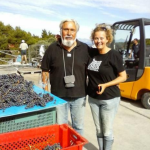“In view of the great challenges that lie ahead of us, we must remain even more vigilant about the financial soundness of the EU”, said ECA President Klaus-Heiner Lehne was quoted as saying.
“Over the next seven years, the EU will spend significantly more than in the previous programme period.”
During the next seven years, the Union will have €1.8 trillion at its disposal.
In addition to the revised multiannual financial framework (MFF) for 2021-2027, worth €1.1 trillion, this also includes Next Generation EU recovery instruction of €750 billion, in response to the COVID-19 crisis, said ECA President Klaus-Heiner Lehne.
The European Court of Auditors on Tuesday released the annual report concerning the financial year 2020, the last year of the 2014-2020 period.
Since the funds from the previous programming period are being absorbed more slowly than planned, due to a late start of the implementation of the programme, auditors warn of the risk of this occurring again in this financial period.
By the end of 2020, the last year of the current seven-year budget, only 55% of the committed funds for the 2014-2020 period were absorbed. That led to an increase in outstanding commitments, which reached €303.2 billion by the end of 2020. The funds for this programming period can be used by the end of 2023.
Croatia doing well in terms of committed funds
Croatia is doing well in terms of committed funds, and by the start of October 2021 it had over 122% of committed funds compared to its allocation. However, it was one of the countries with the lowest absorption rate, with only Italy behind it, and Spain performing slightly better.
Croatia has a total of €10.731 billion at its disposal from the total envelope of the European Structural and Investment Funds (ESIF), and about 47% of that amount was absorbed by the end of 2020, while another €5 billion is to be disbursed.
Croatia’s ECA Member, Ivana Maletić, said that as a new member Croatia hadn’t had enough projects prepared in its first years of membership, but everything was speeding up now and a big jump in absorption was expected now. She cited as an example the construction of the Pelješac Bridge, which will increase absorption by as much as 20% once the funds for this year and next are disbursed.
The slowdown was partly due to coronavirus, and in Croatia also due to earthquakes, so some projects could not begin, Maletić told a press conference.
The ECA points out at its web site that “Member States’ absorption of the European Structural and Investment (ESI) Funds has continued to be slower than planned.”
“By the end of 2020, the final year of the current seven-year budget, only 55 % of the agreed EU funding for the 2014-2020 period had been paid out. This has had the effect of inflating outstanding commitments, which reached €303.2 billion by the end of 2020, the equivalent of nearly two annual budgets.”











